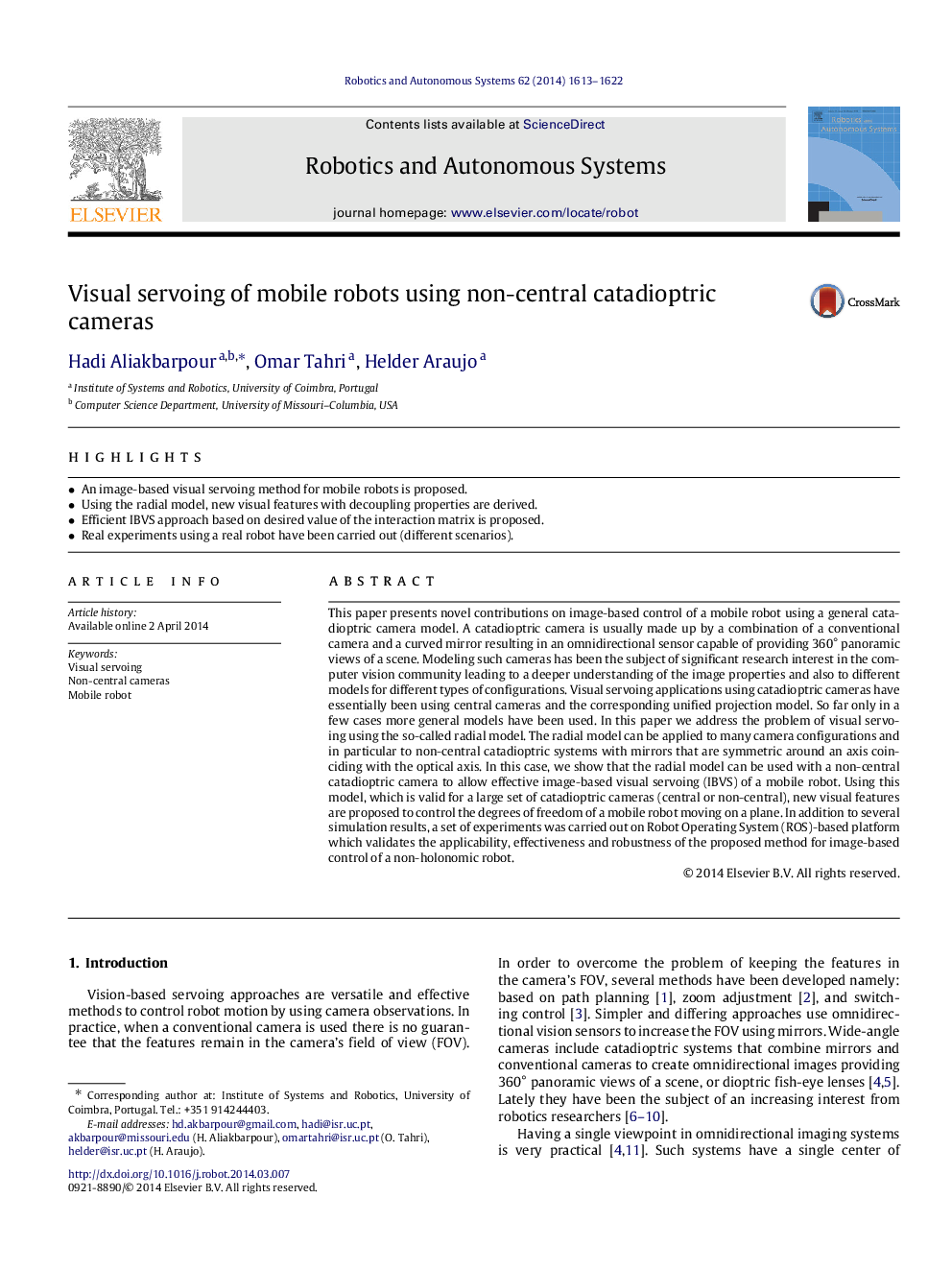| Article ID | Journal | Published Year | Pages | File Type |
|---|---|---|---|---|
| 413392 | Robotics and Autonomous Systems | 2014 | 10 Pages |
•An image-based visual servoing method for mobile robots is proposed.•Using the radial model, new visual features with decoupling properties are derived.•Efficient IBVS approach based on desired value of the interaction matrix is proposed.•Real experiments using a real robot have been carried out (different scenarios).
This paper presents novel contributions on image-based control of a mobile robot using a general catadioptric camera model. A catadioptric camera is usually made up by a combination of a conventional camera and a curved mirror resulting in an omnidirectional sensor capable of providing 360°360° panoramic views of a scene. Modeling such cameras has been the subject of significant research interest in the computer vision community leading to a deeper understanding of the image properties and also to different models for different types of configurations. Visual servoing applications using catadioptric cameras have essentially been using central cameras and the corresponding unified projection model. So far only in a few cases more general models have been used. In this paper we address the problem of visual servoing using the so-called radial model. The radial model can be applied to many camera configurations and in particular to non-central catadioptric systems with mirrors that are symmetric around an axis coinciding with the optical axis. In this case, we show that the radial model can be used with a non-central catadioptric camera to allow effective image-based visual servoing (IBVS) of a mobile robot. Using this model, which is valid for a large set of catadioptric cameras (central or non-central), new visual features are proposed to control the degrees of freedom of a mobile robot moving on a plane. In addition to several simulation results, a set of experiments was carried out on Robot Operating System (ROS)-based platform which validates the applicability, effectiveness and robustness of the proposed method for image-based control of a non-holonomic robot.
